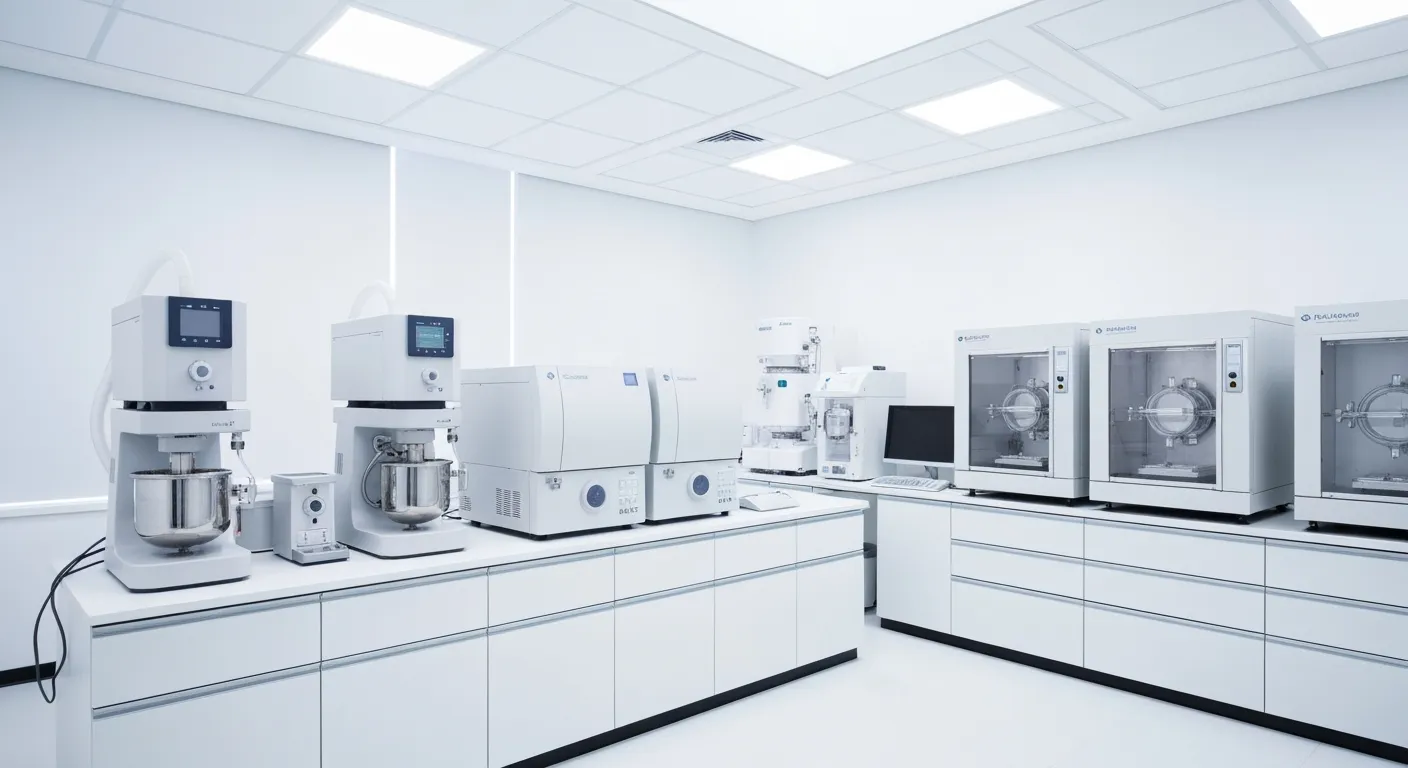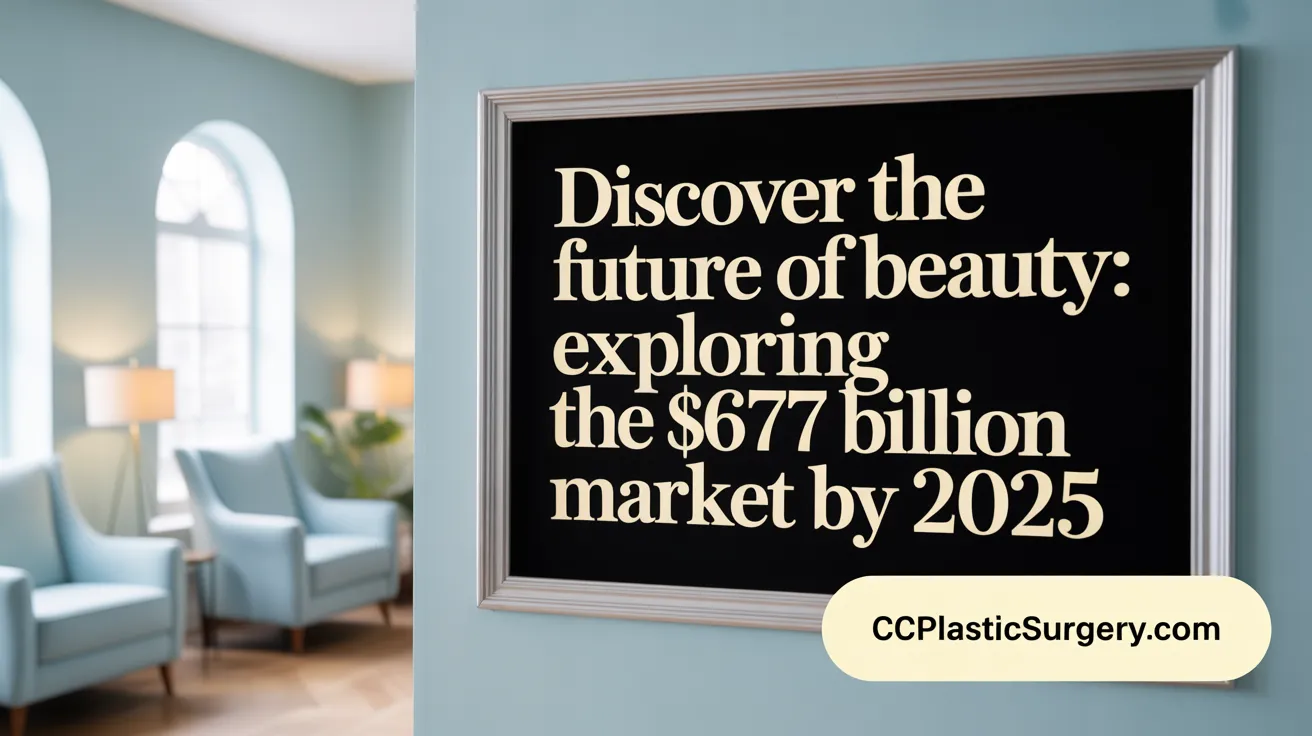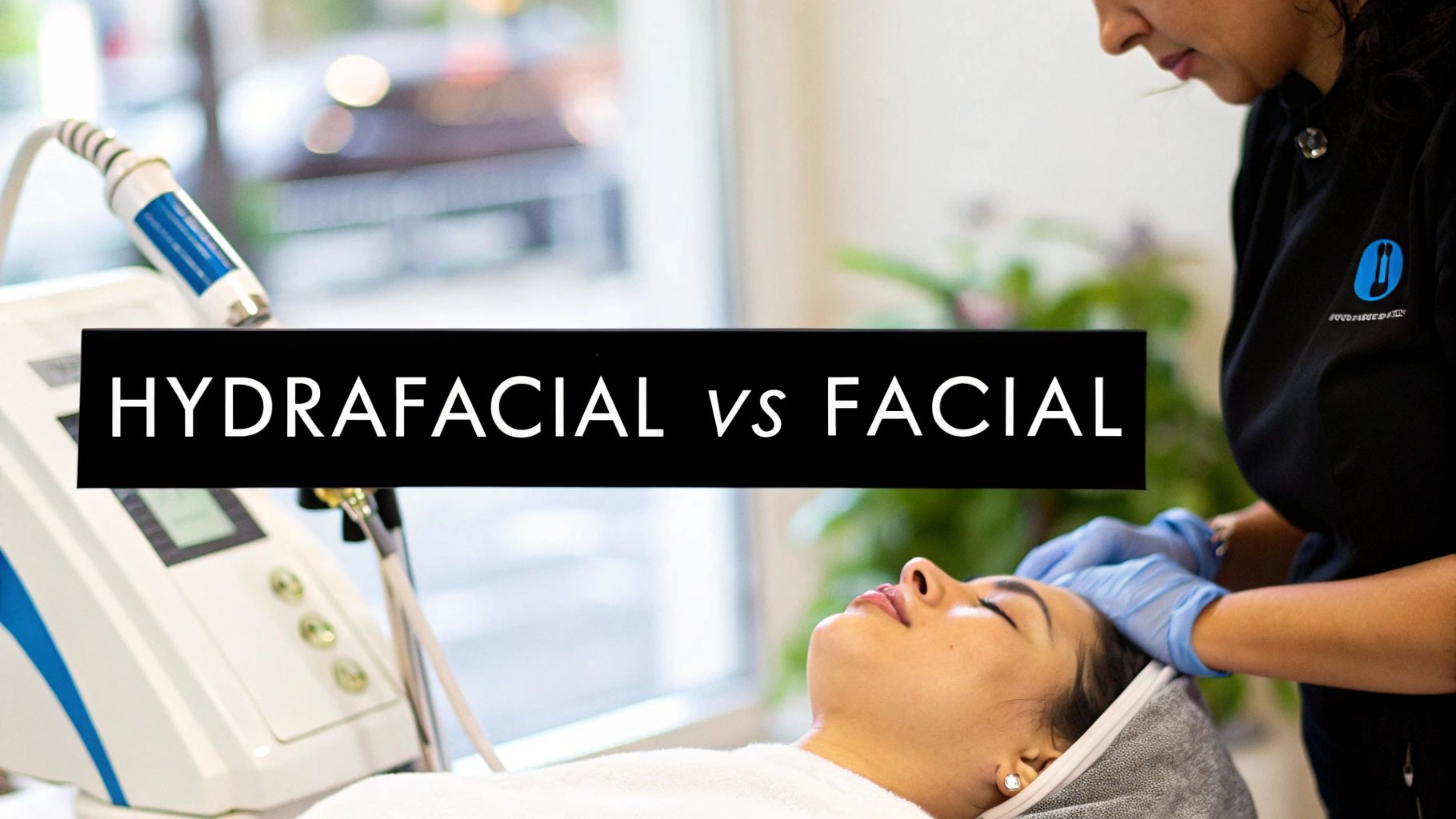
October 12, 2025
Anesthesia Types for Surgery A Patient's Guide
Discover the main anesthesia types for surgery. This guide explains general, regional, local, and sedation to help you prepare for your procedure.
Aug 28, 2025

The cosmetics landscape in 2025 is defined by rapid innovation, rising consumer expectations, and expanding global reach. This article explores the fastest-growing segments, emerging technologies, and shifting consumer preferences driving a multi-billion-dollar market destined for continued expansion. From sustainability's rise to tech-powered personalization, we analyze the key statistics shaping the future of beauty.
 The global beauty industry is expected to reach a valuation of approximately $677.19 billion by 2025. This remarkable growth is fueled by consumer desire for innovative, sustainable, and personalized products, along with increased engagement through digital channels. Online sales are projected to account for over $45 billion in the U.S. alone by 2027, reflecting a significant shift towards e-commerce.
The global beauty industry is expected to reach a valuation of approximately $677.19 billion by 2025. This remarkable growth is fueled by consumer desire for innovative, sustainable, and personalized products, along with increased engagement through digital channels. Online sales are projected to account for over $45 billion in the U.S. alone by 2027, reflecting a significant shift towards e-commerce.
Skincare continues to dominate the market, representing around 42% of the total industry value and generating about $177 billion. This segment benefits from advancements in biotech and AI-driven diagnostics, which support personalized skincare routines and transparent ingredient sourcing.
Regionally, North America and Western Europe are mature markets with steady growth rates of about 7.8% and 7.7%, respectively. Meanwhile, emerging regions like Africa-Middle East and Latin America are experiencing rapid expansion, with growth rates of 27.1% and 19.1%. Notably, countries like India and the Middle East are viewed as promising markets for future gains.
Several major players, such as L’Oréal, Unilever, and Estée Lauder, continue to drive industry revenues, collectively contributing large portions of the market share. The industry's overall valuation recently exceeded $600 billion, with predictions suggesting it could surpass or even approach $800 billion in the near future.
Key trends including inclusivity, social commerce, and advanced digital tools like AI and AR are shaping the market’s evolution. As the industry embraces these innovations, it broadens its appeal to a diverse global consumer base and sustains its growth trajectory.

The global cosmetics industry is poised for steady expansion in the coming years. As of 2024, it is valued at approximately $646 billion and is expected to reach around $677 billion in 2025, continuing to grow at an annual rate of about 3% to 6%. This growth trend is underpinned by the rising popularity of skincare, which accounts for 40% of the market, and the increasing adoption of online shopping, projected to make up over a third of global sales.
Looking further ahead, industry forecasts suggest that by 2030, the total market value could surpass $590 billion, approaching the $650 billion mark by 2025. The growth is supported by technological innovations such as AI, AR, and biotech developments that personalize and enhance product offerings. The growth rate overall remains resilient, fueled by consumer interest in natural, sustainable, and multifunctional products—especially among younger demographics like Generation Z.
Regional variations shape the industry’s outlook. Asia Pacific, especially North Asia including China, Japan, and South Korea, holds around 35% of the global market share and is experiencing rapid growth. Countries like India and the Middle East are viewed as promising markets, with growth rates estimated at approximately 10%. Meanwhile, China's growth is expected to moderate due to market saturation.
In the United States, the market is thriving with an expected revenue of $105 billion in 2025. North America remains a significant contributor, with digital channels playing an increasingly crucial role. Latin America and Africa also present opportunities, with growth rates of about 7% and 10%, respectively, driven by rising disposable incomes and shifting beauty standards.
Despite optimistic forecasts, the industry faces several headwinds. Consumer fragmentation means brands must navigate diverse and evolving preferences across regions. Category pressures and regional disruptions, such as supply chain issues and regulatory challenges, also impact growth.
Moreover, while e-commerce continues to grow—with online sales making up 26% of the market—retail foot traffic slightly declines, reflecting a shift to digital. This trend demands brands innovate their digital strategies and cater to an increasingly value-conscious audience scrutinizing products for efficacy and sustainability.
Overall, the industry’s resilience depends on its ability to adapt to regional dynamics, embrace technological advances, and meet the rising demand for sustainable and inclusive beauty products.
By 2025, the cosmetics industry is set to see significant growth in several key categories and ingredient innovations. Sustainable skincare and eco-conscious products are leading the charge, driven by a rising consumer preference for clean, natural, and organic formulations. This shift echoes a broader demand for transparency and environmental responsibility.
Innovations in biotechnology are also shaping the future of beauty. Ingredients derived from lab-grown sources, such as peptides, exosomes, PDRN, and mini proteins, are gaining popularity. These biotech ingredients promise enhanced efficacy and sustainability, appealing to consumers seeking effective yet eco-friendly products.
In addition, multifunctional formats that merge skincare and makeup are on the rise. Formats like sprays, sticks, peel-offs, and hybrid treatments offer convenience and performance, fitting into busy lifestyles while providing targeted benefits.
Tech-driven customization continues to expand with AI and augmented reality tools. These technologies facilitate personalized skin analysis and virtual try-ons, making beauty routines more precise and engaging.
Men’s grooming is also experiencing accelerated growth, with increased product options and inclusivity across shades and formulations, reflecting broader demographic changes.
Lastly, indulgent products such as gourmand and edible skincare options are gaining ground, combining sensory pleasure with functional benefits. Transparency, innovative ingredients, and sustainable practices are the common threads uniting these trending categories, positioning them as dominant forces in the 2025 beauty landscape.
The beauty industry is rapidly shifting toward greater technological integration and sustainable practices. AI and augmented reality (AR) tools are revolutionizing personalized skincare and makeup, enabling virtual try-ons and diagnostics that provide customized recommendations. Companies like Nykaa and Coty are leading the way, offering consumers tailored routines driven by advanced AI analytics.
Biotech advancements are fueling the development of eco-friendly, effective formulations. Ingredients such as algae-derived alguronic acid, stem cells, exosomes, and other regenerative compounds are being incorporated into products aimed at cellular repair and long-lasting effects. Sustainable ingredients are increasingly sourced via regenerative farming and sustainable fishing practices, aligning with consumer demand for transparency and eco-ethics.
The industry is also emphasizing inclusivity and mental wellness. Brands like Fenty Beauty showcase a broader spectrum of shades and representation, while a growing focus on emotional well-being includes textures, scents, and products designed to evoke tranquility and self-care. Products blending skincare with self-care routines—such as multifunctional sprays, sticks, and peel-offs—are gaining popularity.
On the regulatory front, tightening safety standards and digital tools like digital twins are enabling faster, safer product development. Lifecycle management systems, detailed ingredient tracking, and predictive analytics help reduce waste, avoid stockouts, and ensure compliance.
Overall, these innovations reflect a holistic approach to beauty, emphasizing efficacy, safety, inclusivity, and sustainability. As consumers become more ingredient-aware and tech-savvy, the industry’s future lies in seamlessly integrating digital, biotech, and eco-conscious solutions to meet rising expectations.
The influence of Generation Alpha, the youngest consumers yet highly tech-savvy and environmentally conscious, is reshaping the beauty market significantly. These young consumers are engaging with skincare and beauty routines at an early age, mainly through social media platforms like TikTok, YouTube, and Instagram. Their preferences lean toward trendy, inclusive, and eco-friendly products, compelling brands to adapt quickly.
Gen Alpha’s online behavior not only drives their own purchasing choices but also positions them as micro-influencers, spreading trends and shaping opinions within peer groups. Brands are responding by developing digital-first and social-centric marketing approaches, including innovative packaging, authentic representation, and influencer collaborations.
Parents of Gen Alpha are also key players, increasingly purchasing safe, gentle, and trendy products for their children. This parental influence emphasizes safety, natural ingredients, and the popularity of niche brands, fueling further innovation in gentle skincare and playful product formats.
Altogether, these behavioral shifts contribute to a more youthful, socially responsible, and digitally connected consumer base. To succeed, brands must prioritize transparency, sustainability, and engaging online experiences, ensuring they resonate with this new generation’s values and digital habits.
This evolving consumer landscape underscores the importance of understanding young consumers’ unique preferences, as their impact is expected to grow, shaping beauty trends well into 2025 and beyond.
Innovation is reshaping the beauty industry at a rapid pace, especially through the integration of advanced technology. AI-powered diagnostics and personalization tools are enabling brands to offer tailored skincare routines and product recommendations based on individual skin needs. These tools analyze skin conditions in real-time and suggest specific treatments, making skincare more effective and efficient.
Virtual try-ons and augmented reality (AR) are transforming the shopping experience. Consumers can now see how makeup or hairstyles look on them without physical application, thanks to AR apps and virtual fitting rooms. This interactive technology not only enhances engagement but also helps shoppers make confident purchase decisions—especially important as online beauty sales reach nearly one-third of the global market.
Social commerce platforms like TikTok and Instagram are pivotal in driving sales, leveraging influencer marketing and user-generated content. TikTok, in particular, drives impulse purchases through trending videos and hashtags, making it a hub for discovering new beauty products.
However, with these technological advances come challenges. Data privacy and consumer trust are top concerns, as brands collect sensitive skin data and personal preferences. Ensuring transparency and ethical use of data is critical for maintaining consumer confidence.
Overall, these technologies propel innovation, increase personalization, and foster a more immersive shopping experience, shaping the future of beauty in 2025.
Sustainability is increasingly becoming a focal point in the evolution of cosmetic products and categories. Consumers are more informed and value-conscious, pushing brands to prioritize eco-friendly ingredients, packaging, and manufacturing processes.
Industry leaders are investing heavily in green chemistry, developing bio-based and biodegradable ingredients that lessen environmental impact. Companies like Algenist and Evolved By Nature are pioneering biotech innovations, creating sustainable ingredients from algae and other natural sources. These advancements help reduce reliance on non-renewable resources and promote circular economy principles.
Packaging is also undergoing a transformation, with a shift toward refillable, recyclable, and compostable materials. Brands are exploring regenerative sourcing methods, ensuring that raw materials are obtained through responsible practices that support ecosystem health. Transparency has become a vital aspect, with consumers demanding honest disclosures and verification of sustainability claims to avoid greenwashing.
Regulatory frameworks are increasingly supporting responsible marketing and product transparency, which encourages brands to adopt genuine eco-ethical practices. This focus on sustainability is not only helping mitigate environmental challenges but also catering to a growing market segment that seeks products aligned with their environmental values.
Ultimately, sustainability is reshaping how products are developed, marketed, and consumed, highlighting a shift toward more ethical, eco-conscious, and innovative cosmetics that meet the demands of eco-aware consumers.

Predicted beauty trends for 2025 include naturally glowing, satin or soft dewy makeup finishes that emphasize a fresh and diffused look. Consumers are gravitating towards products that deliver subtle radiance and enhance natural beauty.
In addition, vibrant colors are making a comeback. Butter yellow makeup, in particular, is gaining popularity across various categories such as eyes, lips, and highlighters. This bold trend is amplified on platforms like TikTok, where quick tutorials and viral challenges showcase these lively hues.
Another major shift is towards products that are low-maintenance but deliver high impact. Our focus is on multifunctional and treatment-oriented formats that simplify routines while providing visible results. Formats like sprays, sticks, and peel-offs are preferred for their ease of use and effectiveness.
Finally, there’s a significant rise in the use of advanced technology in beauty, with AI diagnostics and biotech ingredients offering personalized solutions. These innovations are not only enhancing product efficacy but also aligning with consumers’ increasing focus on sustainability and ingredient transparency.
With the ongoing integration of social media trends, technological innovation, and a demand for clean, inclusive, and sustainable beauty options, 2025 promises a dynamic and customer-centric evolution in the beauty industry.
For more details, search "beauty trends 2025" to explore emerging patterns and insights.

Social media platforms like TikTok and Instagram are revolutionizing the beauty industry. Approximately 70% of beauty purchases are influenced by social media, and e-commerce sales through these channels are growing rapidly. TikTok, in particular, alone accounts for around 2.6% of beauty sales, with TikTok Shop generating nearly $1 billion in revenue in the US. Its sheer reach, with over 1.9 billion views on TikTok, makes it a vital platform for brand exposure.
Consumers trust social commerce, with 84% reporting positive experiences when shopping through social platforms. The prominence of influencer marketing and the ease of impulse purchases are fueling this growth. Retailers that embrace social commerce and engage dynamically with audiences are gaining competitive advantages.
Consumers are increasingly seeking out niche, independent, and innovative brands. About 55% are willing to pay a premium for environmentally-friendly and unique products. This shift is evidenced by the rapid growth of lesser-known brands like Lucas Papaw (+94.87%) and Tarte (+90.10%) in the US, driven by factors such as ingredient transparency, unique formulas, and social media presence.
These brands often leverage social platforms to create authentic and relatable identities, attracting loyal customers who value uniqueness and quality.
Traditional loyalty is waning, with brand loyalty in beauty decreasing by around 20% over recent years. Consumers now prioritize diversity, inclusivity, and authenticity over brand allegiance. They actively seek brands that reflect their values, including sustainability and representation.
Inclusivity and representation are core to modern beauty trends. Brands like Fenty Beauty lead the charge by offering broad shade ranges and diverse product categories. Despite Black consumers accounting for roughly 11% of beauty buyers, Black-owned brands only make up about 2.5% of revenue, highlighting the need for meaningful inclusion.
Consumers expect brands to celebrate individuality and embrace authentic diversity. This demand influences product development, marketing, and retail strategies, ensuring the industry becomes more accessible and representative for all.
| Aspect | Impact | Observation |
|---|---|---|
| Social media influence | Over 70% of purchases | Platforms like TikTok grow as top drivers |
| Independent brands | Rapid growth; +94.87% Lucas Papaw | Catering to niche markets and authenticity |
| Loyalty shifts | Decreases by 20% | Driven by values and diversity focus |
| Consumer expectations | Demand for inclusivity | Leads to broader shade ranges and representation |
As the social commerce landscape evolves in 2025, brands that adapt by embracing digital trends, supporting independence, and prioritizing inclusivity are poised for success in the competitive beauty market.
The cosmetics industry in 2025 is navigating a complex landscape of technological advances, evolving consumer values, and rising sustainability demands. With a market nearing $700 billion and sustained growth fueled by digital innovation and inclusivity, brands must embrace authenticity and advanced personalization to thrive. Sustainability, biotech, and social commerce will dominate product development and marketing strategies, while generational shifts underscore the importance of engaging newer, digitally native consumers. The future promises dynamic expansion driven by innovation, diversity, and a holistic approach to beauty, redefining standards and performance in ways that resonate globally.

October 12, 2025
Discover the main anesthesia types for surgery. This guide explains general, regional, local, and sedation to help you prepare for your procedure.

October 11, 2025
Learn the key differences between hydrafacial vs regular facial to choose the right treatment for glowing, healthy skin. Read our expert guide now!

October 10, 2025
Explore the best treatments for sagging skin, from non-invasive to surgical options. Find the perfect solution to restore your youthful appearance.